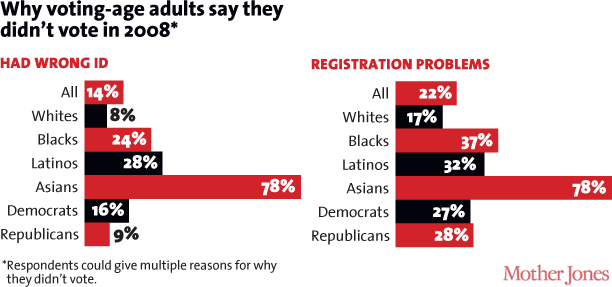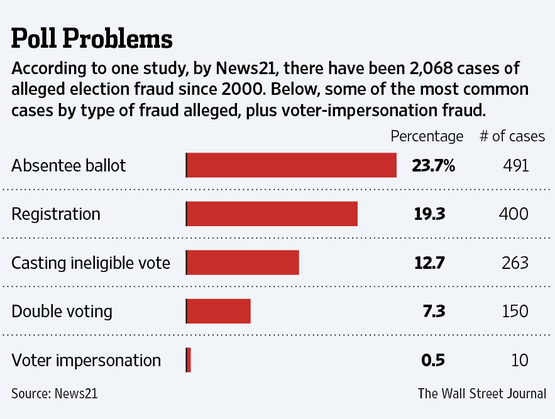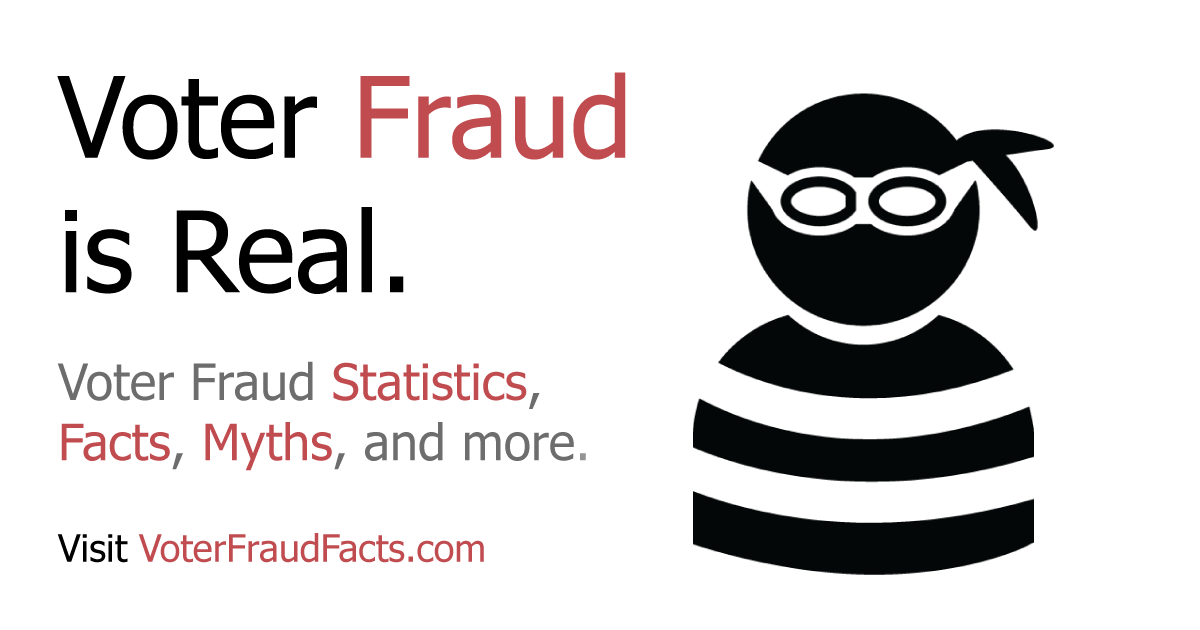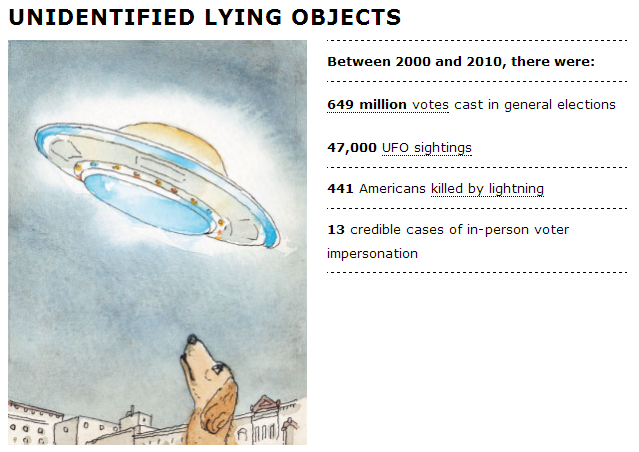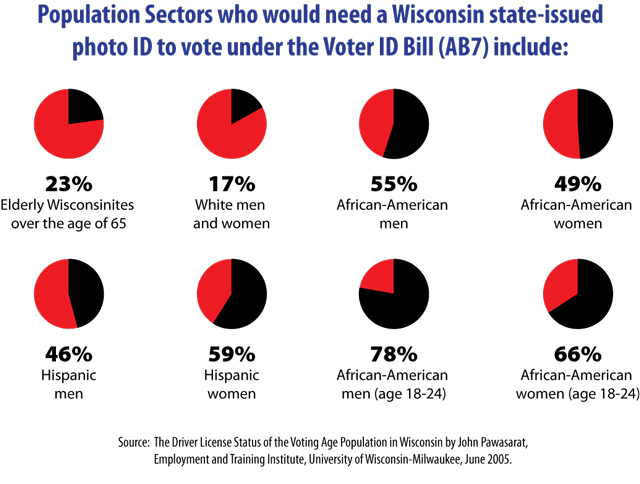Voter fraud myths range from half truths to outright fallacies, we explore persistent voter fraud myths on all voter fraud types from individual to group.
First off let us start by pointing out that voter fraud as a general concept is real, individual voter fraud does happen, and furthermore voter fraud happens on a number of different levels and in a number of different ways. The myths about voter fraud tend to lie more with exaggerations of the prevalence of voter fraud types rather than claims to their existence.
Let us also point out that voter fraud doesn’t have to be illegal, it simply has to be the tampering of the electoral process. So we can consider both someone voting twice as voter fraud (illegal) and we can see a voter ID law (legal) as voter fraud.
Common Voter Fraud Myths
Below we will break down some common voter fraud myths to help shed light on the truth behind voter fraud in the United States.
Myth: Voter Fraud is “fraud”. The phrase “voting fraud” is really a misnomer for a concept that is much broader. “Fraud” is a concept that connotes an intentional act of deception, which may constitute either a criminal act or civil tort depending upon the willfulness of the act. Fraud, n. 1. A knowing misrepresentation of the truth or concealment of a material fact to induce another to act to his or her detriment. Fraud is usu[ally] a tort, but in some cases (esp. when the conduct is willful) it may be a crime. EAC.Gov
Myth: Voter Fraud is one thing. More of a misconception than a myth, there are actually a wide range of different types of voter fraud. Types of voter fraud include voter fraud on the part of individuals, small groups, large groups, politicians, citizens, private companies, and more.
Voter fraud includes, but is not limited to: • absentee ballot fraud, • voter registration fraud, • voter intimidation and suppression, • deceased voters on voter registration list and/or voting, • multiple voting, • felons voting, • non-citizens voting, • vote buying, • deceptive practices, and • fraud by election officials.
Myth: In-person Individual voter fraud is a problem. Depending upon your definition of a problem you may consider this a myth or not. In-person individual voter fraud is rare with convictions for in-person voter fraud being less common than UFO sightings. That being said there would obviously be more suspected cases of voter fraud than convictions, and we can’t rule out the effect this could have in specific elections. Consider in the 2000 Florida elections George Bush won by 537 votes during a recount and became president.
Myth: It’s called “Jerrymandering” and it’s not a problem. To contrast the point above, Gerrymandering (pronounced with a “G” and not a “J” and named after Governor Elbridge Gerry (pronounced /ˈɡɛri/; 1744–1814) could actually be considered a problem. There have been many accusations gerrymandering (redrawing district lines for political advantage). The reason this is a problem is because in these situations a lot of power can be put in one person’s hands. For instance the incumbent can redistrict to push a contender out of their district or to ensure that those favorable to their party will dominate the district. Since one person’s actions can affect a wide number of people, and since redistricting is legal this can pose some big problems.
The word gerrymander (originally written Gerry-mander) was used for the first time in the Boston Gazette on 26 March 1812. The word was created in reaction to a redrawing of Massachusetts state senate election districts under Governor Elbridge Gerry (pronounced /ˈɡɛri/; 1744–1814). In 1812, Governor Gerry signed a bill that redistricted Massachusetts to benefit his Democratic-Republican Party. When mapped, one of the contorted districts in the Boston area was said to resemble the shape of a salamander.
Myth: Electronic voting is smart / dangerous. Supporters and opponents of electronic voting tend to have strong feelings. One side thinks it can help eliminate voter fraud and the other thinks it simply facilitate voter fraud. The truth is both sides have merit. On one hand electronic voting and voter registration would help make the process of voting easier and more widespread, also (when done correctly) ensures that everyone casts one vote. However, an electronic system that is insecure in anyway could lead to manipulation of votes by a group (think the Diebold shenanigans). While electronic voting is certainly the future of voting, the road we take to get there could be a bumpy one.
Myth: Voter ID prevents in-person voter fraud. Some sources say voter ID laws don’t prevent turnout and stop potentially hundreds of thousands of illegal aliens from voting and stop people from casting more than one ballad. On the other hand almost all other sources say voter ID prevents those most likely to not be able to obtain valid ID (students, low income, seniors) are hurt and point to statistics like the fact that “Out of the 197 million votes cast for federal candidates between 2002 and 2005, only 40 voters were indicted for voter fraud. Only 26 of those cases, or about .00000013 percent of the votes cast, resulted in convictions or guilty pleas.”
Both sides of the voter ID debate have merit. On one hand the average person believes in “one citizen, one vote”, but on the other hand basic logic will tell you that restrictive voting laws are going to decrease the number of the 55%(ish) of Americans who vote. We should be finding ways to ensure more people participate in a fair election, restrictive voter ID laws that make it impossible for students to vote are an example of an imperfect solution at best.
Myth: Hundreds of thousands of Illegal aliens vote in elections. There is actually no way to know how many illegal aliens vote, or what elections they vote in, or to what extent these people are participating in society. The problem stems from the fact that the US still lacks a clear, organized, and accurate way to facilitate voting and vote counting. Studies have shown that illegal aliens voting has been an issue and other studies have shown the opposite. For instance in Florida going into the 2012 elections the GOP attempted to purge “illegals” from the voting roles. However, it turned out that nearly 90% of those they were trying to purge were legal minorities.
Keep checking back for more voter fraud myths. As this site grows we will continue to compile an ongoing list of misconceptions, myths, and half-truths on voting.
